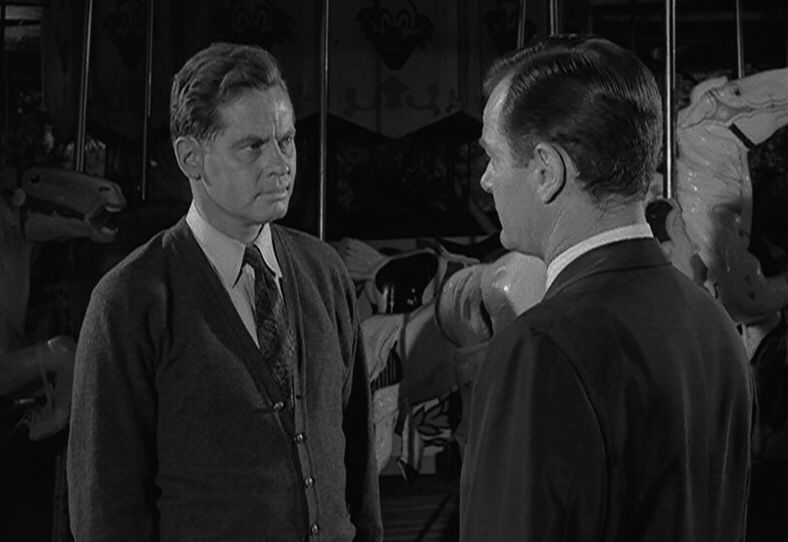
fciwomenswrestling.com femcompetitor.com, fcielitecompetitor.com, fciwomensports, pexels.com Alexy Almond
Returning home to the house where she grew up and the town where she was once very popular in high school always had a soothing effect on Kathleen.
For over forty years.
Unknown to her, part of the reason it was so soothing was because she could relive a wonderful past filled with handsome boyfriends, memorable parties at her old teenage girlfriend’s homes and the fun of working at the local restaurant ice cream parlor that no longer exists.
It was too good.
So when it was clear that her last living parent was finally going to have to move to an assisted living facility and her childhood home would be sold, Melissa, now 58 and divorced, quietly walked into her old bedroom and broke down and cried like a baby.
Two things became very apparent to her.
Her adult life had not turned out like she had expected and every time that she went home, no matter the reason, she had been living in and yearning for the past.
Her story mirrors one of the most impressionable episodes of the brilliant television show, the Twilight Zone entitled Walking Distance.
“Walking Distance” is episode five of the American television anthology series The Twilight Zone. It originally aired on October 30, 1959 on CBS. The episode was listed as the ninth best episode in the history of The Twilight Zone by Time.
Here is the storyline.
Martin Sloan, age thirty-six. Occupation: vice-president, ad agency, in charge of media. This is not just a Sunday drive for Martin Sloan. He perhaps doesn’t know it at the time, but it’s an exodus. Somewhere up the road he’s looking for sanity. And somewhere up the road, he’ll find something else.
What he finds is that the town he once knew as a boy in 1934 hasn’t changed.
He meets himself as a child and his parents when he was young.
The Martin of the present felt he had been living life in a dead run and now he wanted to go back an experience band concerts and eating cotton candy once more.
Martin will soon find out that you can never truly go home again.

Martin’s father eventually advises him that everyone has his time and that instead of looking behind him, he should look ahead, because as delightful and rewarding as he may remember childhood to be, adulthood holds its own delights and rewards.
Yes there are marching bands and ice cream cones in every time period.
As adults, we just have to find them.
The only real way to find them is to look ahead and not backwards.
For you, once the aura of the past has passed, what are your goals for the future?
We have a writer who has some suggestions on how to not only have an important goal achieved future but an exceptional one where you surpass your wildest expectations.
It’s a very intriguing article.
It may help you find the marching bands, ice cream cones and cotton candy pertinent to you in our time period.
Designing Your Impossible Future: Why You Need One and How to Do It
By Jane Hardy
Leaders I coach understand the importance of identifying a solid career goal to give themselves focus and direction. But the idea of developing an Impossible Future can often be overwhelming. This article outlines the concept and value of an Impossible Future and gives you eight steps for designing your own. Once you learn how to create one for yourself, you can easily apply the same principles to your organization.
What is an Impossible Future?
Robert Hargrove, in his book Masterful Coaching (pp.xiv-xvii), defines Impossible Future as an “extraordinary result…or transformational goal”. It moves you beyond goals based on a Predictable Future of incremental change and continuous improvement to reinventing yourself to achieve more than you thought possible. Designing your Impossible Future is about personal transformation. It requires imagination and an act of faith.
Here are some examples of what a Predictable Future (PF) career goal might look like:
- Finish university and become an engineer;
- Get a promotion within two years, or get promoted two levels within five years;
- Get a new job within one year, or become comfortable in my new job within six months.
Predictable Future goals are based on extending the present situation logically into the future if all goes well. They focus on the short to medium term and involve overcoming obstacles while learning and strengthening professional competencies. The goals are clear and measurable. Attaining a PF will give you satisfaction and build confidence.
An Impossible Future (IF) goal looks more like this:
- Meet the needs of serious woodworkers and gardeners as one of the leading mail-order and retail suppliers of woodworking tools, gardening tools and cabinet hardware (Leonard Lee, Lee Valley Tools);
- Better Leaders. Better World (Leadership coach Robert Hargrove);
- A computer on every desk and in every home (Bill Gates).
With an IF, you go beyond the limits of your personal achievements and focus on how you might make a larger contribution to your community and even the world. It seeks to answer questions of why are you doing this and what positive difference can you make to others. An IF is emotionally compelling and self-energizing. It inspires you to challenge yourself and go beyond your own expectations. It speaks to your deepest desire to accomplish something of value and give your life meaning.
At this point, I can hear you say, “But I’m not a Bill Gates or a multinational company! This is not something that applies to me”. My answer is that every life has value and meaning and every person of whatever skill level and experience has the ability to imagine a more positive and powerful future for themselves if they try. You owe it to yourself to be the best you can possibly be.
An Emerging New Paradigm
Changing the way we set personal and professional goals is based on a new paradigm called social constructionism. It is described in the book, Appreciative Coaching: a Positive Process for Change (p.23), by Sara L. Orem, Jacqueline Binkert and Ann L. Clancy:
“Instead of seeing an objective, predictable and controllable universe, scientists in the 21st century see a vastly different world based on the findings of quantum physics and the new sciences of chaos theory, self-organizing systems and complexity theory… Integral to social constructionism is the notion of individuals as active, independent and spontaneous beings who, consciously or not, form images of the future toward which they then grow.”
Dr. David Cooperrider, Fairmount Minerals Professor of Social Entrepreneurship at Case Western Reserve University and founder of the Appreciative Inquiry approach, says that to a far greater extent than is normally acknowledged, we humans create our own realities through symbolic and mental processes. Every goal has conscious and unconscious limits built-in by the person designing it. Many of these limits come from our own fears and negative thinking rather than anything that could really hold us back. So “dreaming big” can be a way to push past those self-imposed limits.
Designing an Impossible Future is not wishful thinking. It is a new way to set goals that reflects recent scientific findings about human strength and resilience. It is founded on the idea that your reality is yours to create. You can construct a small, safe, predictable future or something more meaningful and challenging. Your Impossible Future will most likely have a longer time frame, and one Impossible Future can lead to another.
8 Steps to Designing Your Impossible Future
- Start by taking stock of your current reality, but with a twist.
Instead of focusing on what is wrong or missing, look for the best of what is now. Identify your current strengths. Reflect on your career high points, positive experiences and accomplishments. Find similarities, themes and lessons across your positive experiences. What is working well for you? What do you want to keep? Describe in detail your positive core.
- Become an explorer into your future.
With your positive attributes and strengths in mind, imagine your ideal future in broad strokes. Generate images of possibilities. What would someone who respects and loves you want for your future? How would you express your highest and best self? If there were no obstacles, what could you accomplish that could make a positive difference for you and your community?
- Paint a detailed picture.
Now add plenty of detail to your future. Define it as clearly as if you were standing in your Impossible Future now. Use present tense language. What does it look like exactly? Where are you? Who is there? What are they saying about you? What are you doing? How are you feeling? Make it real in your mind. Remember, you are forming the image of your future toward which you are going to grow.
- Pay attention to the language you use.
Scientists today recognize that how we use language creates our social reality. Optimistic, possibility-generating language drives people to take action in a positive direction far more than negative, critical, cautionary approaches.
- Declare your future to others.
It is important to give voice and intention to your future. You need to tell people where you want to go and what difference you want to make. Making your goals public will increase your commitment. As well, if people know where you are going, they just might help you.
- Look for aspects of your Impossible Future that you are already living.
If you have a clear vision of where you want to go, your brain will unconsciously look for opportunities to move toward that vision. Doors will open that you did not see before. It is likely that you have already started on the path toward your future. It will give you confidence if you are able to notice what progress you are making now.
- Develop a broad action plan but leave room for experimentation.
Turn your Impossible Future into a plan with stepping stones, but look for opportunities to experiment. The focus is to expand your capabilities and learn new things. This will mean looking at your beliefs and assumptions, getting help from others to see your blind spots, and trying new ways of tackling obstacles.
- Stay flexible, persevere and celebrate.
Impossible Futures, like Rome, are not built in a day. Keep faith when the going gets tough and celebrate successes both large and small. This will help calm your doubting self and your inner critic.
Impossible Futures create momentum and excitement and can be life changing. The biggest hurdles you face are your own doubts and fears. You need to exercise your imagination muscle so that you can design your best possible future and then believe in yourself enough to act boldly in the present to achieve it.
Jane Hardy is a Certified Executive Coach and former senior executive in Ottawa. She is passionate about combining her many years of senior leadership experience with executive coaching skills to help leaders achieve their full potential. Her website is at Executive Coaching Ottawa.
Article Source: https://EzineArticles.com/expert/Jane_Hardy/1286015
Article Source: http://EzineArticles.com/7014867
~ ~ ~
OPENING PHOTO fciwomenswrestling.com article, pexels.com Sebastian Voortman photo credit
Jane Hardy is a Certified Executive Coach with over 20 years experience as a senior executive in large organizations. She has been responsible for such diverse portfolios as communications, industrial security, finance and IT. Her objective is to combine her extensive senior leadership experience with executive coaching skills to offer creative, confidential, learning partnerships that will enable leaders to achieve more than they thought possible – for themselves, their organizations and the people they serve.



